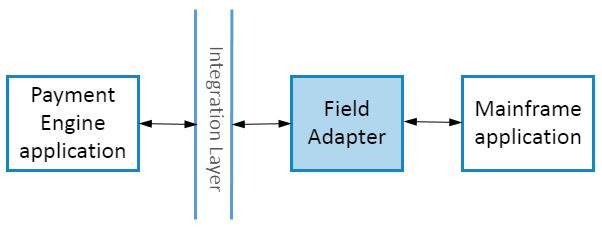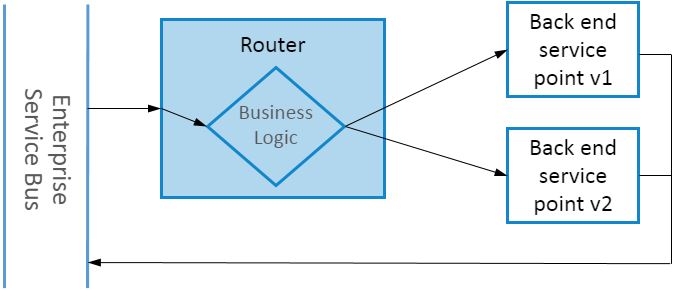| CONTENTS
Message routing solution to enable parallel project delivery | Automated message response solution | |
BackgroundOur teams’ in depth knowledge and experience in Service Virtualisation enabled them to design and deliver unique bespoke solutions for a banking client. Three unique and original solutions were delivered by our Sandhata team in their roles as Service Virtualisation consultants in the middleware integration team at a Tier 1 bank. Our consultants are true experts in their field and are the reason that we have developed the reputation to tackle the most complex issues with the ability to optimise any aspect of IT delivery across the enterprise. These state-of-the-art solutions involved using Service Virtualisation software in a non-traditional way to solve real business problems by providing self-service and automation. |
1. Message routing solution to enable parallel project delivery
Business Challenge
A high priority project needed 2 different test phases to be run in parallel requiring different application test connectivity in the same test environment. This introduced a test environment dependency, causing a bottleneck in delivering this urgent business change.
Technical Limitation
Both test phases had to be run simultaneously, but had different requirements for connecting to “back end” integration endpoints. In traditional Enterprise Service Bus (ESB) configuration there is a one-to-one relationship between an integration endpoint and the back end service point, meaning the 2 test phases could not be executed simultaneously in the same test environment.
One solution is to create a new environment per project requirement, but this can quickly increase costs, increase environment management workload, increase technical debt and create risks of versioning issues.
The Solution
Our consultants designed and delivered new spoof endpoints using Service Virtualisation technology. These new endpoints (routers) incorporate logic to send messages on to the appropriate back end service provider, thereby removing the need for multiple different test environments.
The Result
The SV router solution uses a data driven approach, so it’s extensible and flexible. The logic used for routing can be updated in real time by the test team, enabling self service for the testers. This solution completely removes the dependency between different test phases, removing bottlenecks and increasing agility in project delivery and therefore for the business.
The Team
This innovative solution to a very real business problem was designed and delivered exclusively by Sandhata. Our deep business understanding enabled us to solve a problem with the business needs prioritised.
2. Automated message response solution
Business Challenge
Project timelines were long and drawn out because of the slow, manual work required in test phases to simulate message responses. Project plans included 1 week’s effort for the test team to manually build message responses for their test cases. This was impacting on the business’ capability to respond to market forces and client needs.
Technical Limitation
When testing in System Integration Testing (SIT) phase, the test team needed to validate responses for each message sent as part of full end-to-end testing. However the downstream system which generates these responses in other environments was not available in the SIT environment. There was no option to use the downstream system.
The Solution
Our consultants designed and built a virtual downstream system which was capable of sending appropriate responses and simulating the missing downstream system. The virtual service is able to generate 3 different types of responses tailored to each messages based on the inputs it receives.
The Result
The virtual service can be triggered automatically as part of each test case and responds appropriately for each different test requirement. This service runs independently and has completely enabled self service for the test team. The new solution allows response validation to be done in seconds, and is infinitely repeatable.
The Team
Our team of consultants, in partnership with the client team, designed and delivered this solution in 5 man days. Our business experience and expert knowledge of the service virtualisation tool enabled us to produce a flexible, fully automated, self service solution for the test team.
Business Impact
- Message response creation down from 5 man days to seconds
- Completely automated, self service solution
3. Field adapter to enable end-to-end mainframe testing
Business Challenge
The business was facing additional risk in every release for the critical Payment Engine application because full end-to-end testing was not possible in the test environments.
Technical Limitation
End-to-end testing of the Payment Engine application required testing with a mainframe application. The 2 applications used incompatible values for date fields so full end-to-end testing was not possible. This meant there was large risk present in every release.
 The Solution
The Solution
Our consultants designed and delivered an adapter to modify the date fields appropriately so that the systems could interact. This adapter has enabled self-service for the testers as they can modify the configuration of the service independently in real-time. The solution is completely future-proof as the service does not depend on the content/structure of the message.
The Result
This solution has been used In all projects delivered since it became available. It has greatly reduced business risk for each release of the critical Payment Engine application as full end-to-end testing is now performed for all releases.
The Team
Our consultants worked with the client team to design and deliver this solution. Our experience working on this type of issue enabled us to suggest a simple, long-term solution with minimal maintenance overheads.
Sandhata Master
Latest posts by Sandhata Master (see all)
- The First 5 Steps to Take for Low Code Automation - 17th March 2024
- 10 Reasons Your Organization Needs Low Code Automation Now - 17th March 2024
- Low Code Automation and Integration: A Seamless Synergy - 17th March 2024


